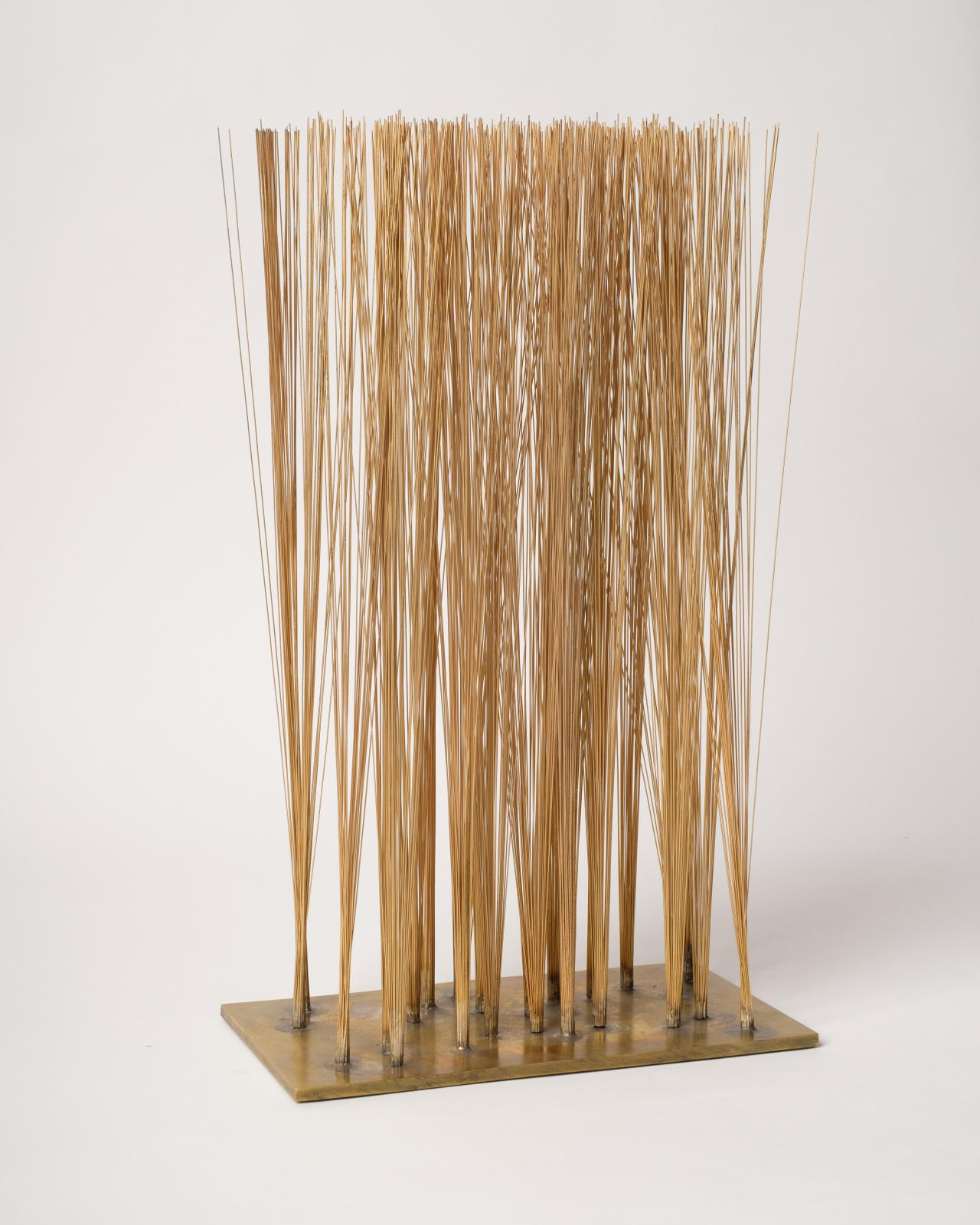



artist
Harry Bertoia was born on March 10, 1915 in San Lorenzo, Italy. He immigrated to the United States in 1930 and enrolled in Cass Technical High School. There he studied art and design, eventually learning a trade in designing jewelry. He went on to study at the Art School of the Detroit Society of Arts and Crafts and then to Cranbrook Academy of Art where he met Walter Gropius, Edmund Bacon, and Ray and Charles Eames. During his time at Cranbrook, he sent prints to the Guggenheim for evaluation. The aquistions director then proceeded to purchase all 100 prints, 19 of which would be featured in the next exhibition. Karl Nierendorf of Nierendorf Gallery in New York supported Harry after the exhibtion with a stipend and the logistics to produce gallery shows for his prints and jewelry. In 1939 Bertoia opened a metal workshop where he taught metalwork and jewelry design. In 1950 he moved to Pennsylvania where he established a studio and began to work with Hans and Florence Knoll, the iconic furniture designers. Bertoia designed a number of chairs for the Knolls known as the Bertoia Collection. In the mid 1950’s he turned his attention solely to sculpture. By 1956, he would go on to show for decades with the Fairweather Hardin Gallery of Chicago and Staempfli Gallery in New York.
In the 1960’s Bertoia embarked upon creating his sound or “Sonambient” or “tonal” sculptures which would be one of the most important innovations in the realm of sculpture in the 20th century. It is believed that Bertoia had an “epiphany” when he struck a metal rod while working with it and was taken with the sound it produced. It is important to note that Bertoia’s focus was on working with various alloys and metals to develop certain tonalities and that the air and space around these works was important in his thought process. Today, Betroia’s works are in the collections of the Brooklyn Museum in New York, the Hishorn Museum and Sculpture Garden in Washington, D.C., the Philadelphia Museum of Art, and the Walker Art Center in Minneapolis, among others. His sound sculptures especially both fascinate and attract numbers of ardent art patrons and collectors. Bertoia died in Pennsylvania in 1978. The Harry Bertoia Foundation continues his legacy. Yet it is the sound of his sculptures that will live on in the memories of his followers and supporters.
Description
provenance
Private Collection, Denver
Inkfish Gallery, Denver
Lost City Arts, New York
JFM Foundation Collection, Denver, CO 2009 - 2021
Hindman Auction, Chicago IL., September 2021



